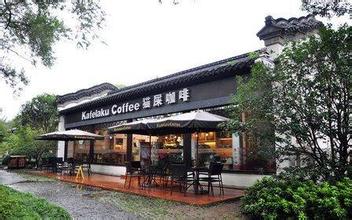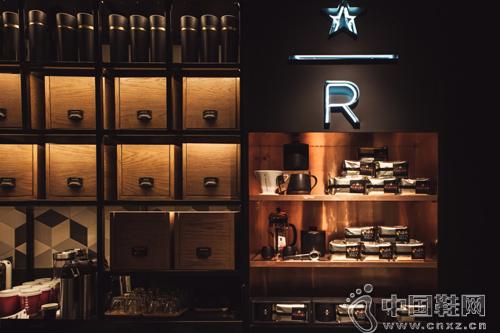Domestic chain Coffee Market: Costa is not clear about its own position in the struggle with Starbucks
In the Chinese market, the competition between the two is particularly fierce. In recent years, however, Costa has been declining in the battle with Starbucks. If you pay attention, you can find that in the streets of first-tier cities, there are often two Starbucks in front of and behind Starbucks, outflanking Costa.
There are competitors in any industry. In the coffee world, the infighting between Costa and Starbucks never stops. The former comes from the UK, the latter from the United States, and they all have ambitions for global expansion.
In the Chinese market, the competition between the two is particularly fierce. In recent years, however, Costa has been declining in the battle with Starbucks. If you pay attention, you can find that in the streets of first-tier cities, there are often two Starbucks in front of and behind Starbucks, outflanking Costa.
That's not the worst part.
Now, if you ask who is the largest coffee chain in the Chinese market? The answer must be Starbucks. But the second place is not his archrival Costa. According to the latest report, Pacific Coffee is overtaking Costa to become the "second in the industry" after Starbucks.
The location is not clear
When entering the Chinese market in the early days, Costa and Starbucks regarded themselves as the representative brands of English coffee and American coffee respectively. In first-tier cities, except for the different colors of store decoration, Costa and Starbucks are imported chain coffee brands. In the perception of mass consumers, Costa is to Starbucks, similar to Pepsi to Coca-Cola and McDonald's to KFC.
Gradually, however, the mass base between the two has changed.
A joke widely circulated in the industry is that consumers come to Costa and directly ask for a "matcha latte". At that time, there was only a green tea latte on Costa's menu, and the waiter could only point it out awkwardly. It was not until nearly a year ago that Costa quietly rewrote "green tea" on the menu to "matcha".
This case is reminiscent of the struggle between KFC and McDonald's over "sundae" and "New Land". It also shows how important consumers are to the awareness of retail brands.
Recently, Costa began to openly challenge Starbucks about the launch of the new coffee Flat White.
It is understood that just a week after Starbucks launched its new single Flat White, Costa immediately launched the same single, with a different Chinese name, called mellow Yibai. On Cosat's Wechat public account, an introduction titled "this is the Real Flat White" seemed to be shouting to Starbucks. The article also points out that a perfect Flat White and exquisite flower drawing are essential. Starbucks' Flat White, on the other hand, uses a little bit of milk foam instead of pulling flowers as an iconic selling point.
After the news came out, there was a war of words between the two sides. According to the reporter's survey of friends and colleagues around, most people agree with the fragrant white of Starbucks.
In this regard, industry analyst Li Yun told the International Finance News that the reason for Costa's defeat to Starbucks has been simple and direct, that is, its own positioning is not clear enough. "We know that both Starbucks and Costa are actually fast food coffee. Starbucks has always been very clear about this positioning and understands the basic requirements of fast food coffee: it is fast enough to ship and tastes medium. Starbucks is also based on these factors, ahead of other brands, occupy the global fast food coffee market.
Once an industry insider told the International Finance News bluntly why it is also fast food coffee, but Costa has always felt that "we have more quality, we have more style"? Is this why British brands are different from American brands? "to put it bluntly, consumers who really want to drink quality coffee will go to boutique cafes. And Costa has always had a strange 'self-esteem', but did not thoroughly understand where their product positioning is.
It has been pointed out that with the expansion and strategic adjustment, Starbucks has no longer deliberately stressed that it is American coffee, and the regional identity has been weakened. Now, Starbucks represents a way of life. And Costa, it seems to be just coffee.
In the eyes of industry insiders, Costa must renew and strengthen its brand characteristics.
Encounter a counterattack
While Costa was still planning a gap of "hard work", another coffee shop completed a gorgeous counterattack in the Chinese market. That is, Pacific Coffee, which has occupied the second place of Costa in the Chinese market.
Costa has 344 stores in China, according to results released in May by Costa's parent company, Whitbread. According to win statistics, Pacific Coffee has 458 stores in China, far exceeding Costa.
About a year ago, third Eye Retail exclusively reported on the cross-border play of Pacific Coffee in cooperation with banks and hospitals. At that time, Pacific Coffee also ranked behind Starbucks and Costa. A year later, Pacific Coffee surpassed Costa to become the second largest coffee chain in the Chinese market.
Data show that in 1992, Tom Neir and his wife from the United States founded Pacific Coffee, which is aimed at business people, when they lived in Hong Kong. In 2010, China Resources acquired Pacific Coffee and became an important part of its consumer goods sector. With the help of China Resources, Pacific Coffee entered the mainland in 2011.
In the eyes of consumers, Pacific Coffee has always been a "low-key and introverted" brand. And this "quiet gentleman" seems to take advantage of the fierce struggle between Starbucks and Costa, silently found a position for himself, and successfully counterattacked.
Li Gou believes that the success of Pacific Coffee is precisely what Costa needs to learn and learn from.
Because unlike general consumer goods, coffee shops need to create their own brand tone in order to strengthen consumers' sense of value identity. In the highly competitive coffee market, Pacific Coffee has clearly found its own customer base very accurately.
In order to stick to customers, Pacific Coffee has done a lot of work in the operation and maintenance of membership cards. As mentioned earlier, Pacific Coffee attracts many members with similar temperament and values-drama activities and music salons-with its unique tonality.
Now, after a lot of blows, Costa is also aware of the criticality of its customers.
Costa is understood to be trying to redefine its brand value. One measure is whether the product allows consumers to take out their mobile phones to take pictures and share them with friends.
Source:
Important Notice :
前街咖啡 FrontStreet Coffee has moved to new addredd:
FrontStreet Coffee Address: 315,Donghua East Road,GuangZhou
Tel:020 38364473
- Prev

The Kopi Luwak counterattack became the highlight of the coffee market ushered in the perfect counterattack after the trauma of the new rival.
With the popularity of the third wave of coffee culture around the world, the number of urban coffee chains in China shows a blowout trend. Among them, Kopi Luwak, which is recognized as the most expensive coffee in the world, is gradually entering the Chinese market.
- Next

The latest news of Hong Kong coffee industry: Starbucks specialty store, Mong Kok Starbucks fashion store
[China Footwear Network-Street search Store] Starbucks has opened a regional specialty store in Mong Kok, Hong Kong. in addition to serving classic handmade drinks, Starbucks has also opened Hong Kong's first Starbucks Reserve Coffee Experience Bar, offering more ways to cook coffee and provide the most prestigious coffee than the Lieshan Xiamen store in Central. Starbucks Reserve's coffee beans are from the highest quality in the world.
Related
- What brand of black coffee is the most authentic and delicious? what are the characteristics of the flavor of the authentic Rose Summer Black Coffee?
- Introduction to the principle and characteristics of the correct use of mocha pot A detailed course of mocha pot brewing coffee is described in five steps.
- Which is better, decaf or regular coffee? how is decaf made?
- How much is a bag of four cat coffee?
- How about four Cat Coffee or Nestle Coffee? why is it a cheap scam?
- Which is better, Yunnan four Cats Coffee or Nestle Coffee? How about cat coffee? is it a fake scam? why is it so cheap?
- How about Cat Coffee? what grade is a hoax? which instant coffee tastes better, four Cat Coffee, Nestle Coffee or G7 coffee?
- Process flow chart of coffee making-Starbucks coffee making process what coffee tastes good at Starbucks
- The top ten best coffee beans in the world Rose summer coffee or Tanzanian coffee tastes good
- Yunnan four cat coffee is good to drink?_four cat coffee is a big brand? four cat blue mountain coffee is fake?

